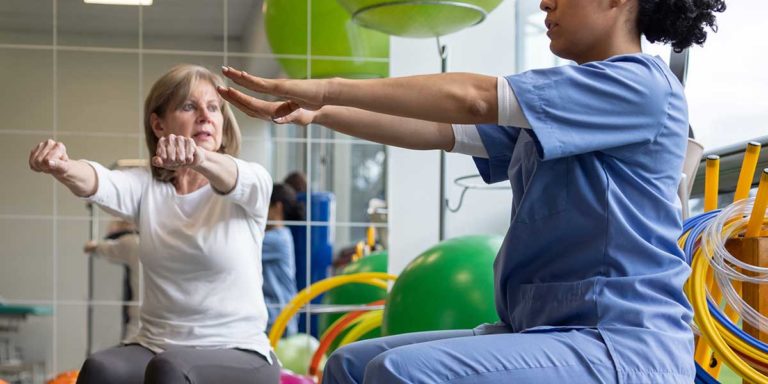Post-Surgery Rehabilitation: The Role of Physical Therapy
Undergoing surgery can be a challenging and life-altering experience. Whether it’s a routine procedure or a complex operation, the road to recovery can be filled with physical and emotional hurdles. One essential component of this recovery journey is post-surgery rehabilitation, and the unsung hero in this process is often physical therapy. In this blog post, we will delve into the critical role of physical therapy in post-surgery rehabilitation and how it can make a significant difference in your recovery.
Understanding Post-Surgery Rehabilitation
Post-surgery rehabilitation is the process of restoring function, mobility, and strength to the body after a surgical procedure. The goal is to help patients regain their independence and improve their quality of life. While every surgery is unique, the importance of a structured rehabilitation plan cannot be overstated. Whether it’s a joint replacement, spinal surgery, cardiac surgery, or any other surgical intervention, physical therapy plays a pivotal role in the recovery process.
The Benefits of Physical Therapy in Post-Surgery Rehabilitation
- Pain Management: Surgery often leaves patients with pain and discomfort. Physical therapists are experts in managing pain through various techniques, including manual therapy, exercises, and modalities like heat and cold therapy. They help patients reduce pain and reliance on pain medications, which is especially crucial in avoiding potential addiction issues.
- Restoring Mobility and Function: After surgery, it’s common to experience a loss of mobility and function in the affected area. Physical therapists design personalized exercises and mobility drills to gradually restore range of motion, strength, and function. This aids in regaining independence in daily activities.
- Preventing Complications: Immobility after surgery can lead to complications such as blood clots, muscle atrophy, and joint contractures. Physical therapy interventions help prevent these complications by keeping the body moving in a safe and controlled manner.
- Individualized Care: Every patient’s needs are unique, and physical therapists tailor their treatment plans accordingly. They consider the type of surgery, the patient’s overall health, and specific goals to create a personalized rehabilitation program. This individualized approach ensures the best possible outcome.
- Enhancing Emotional Well-being: Surgery can take a toll on a patient’s mental health. Physical therapists often serve as motivators and emotional support, helping patients stay focused on their recovery goals and providing encouragement throughout the rehabilitation journey.
The Role of Physical Therapists in Post-Surgery Rehabilitation
Physical therapists are healthcare professionals with specialized training in musculoskeletal and neuromuscular disorders. They are an integral part of the post-surgery rehabilitation team and work closely with surgeons, nurses, and other healthcare providers to ensure a holistic approach to recovery.
Here are some ways physical therapists contribute to post-surgery rehabilitation:
- Assessment: Physical therapists begin by assessing the patient’s current physical condition, including range of motion, strength, and any pain or discomfort. This assessment helps them develop a baseline and set realistic goals for the rehabilitation process.
- Treatment Planning: Based on the assessment, physical therapists create a customized treatment plan that includes exercises, stretches, and manual techniques. They also educate patients on proper body mechanics and movement patterns to prevent injuries during the recovery process.
- Progress Monitoring: Throughout the rehabilitation journey, physical therapists closely monitor the patient’s progress. They adjust the treatment plan as needed to ensure continuous improvement and address any setbacks that may arise.
- Education: Education is a crucial aspect of physical therapy. Therapists teach patients about their condition, the importance of adherence to the rehabilitation plan, and strategies for pain management and injury prevention.
- Motivation and Support: Perhaps one of the most vital roles of physical therapists is providing motivation and emotional support. They celebrate small victories with patients, offer encouragement during challenging times, and help maintain a positive mindset throughout the recovery process.
Post-surgery rehabilitation is a critical phase in the journey toward recovery and regaining one’s quality of life. Physical therapy, with its expertise in pain management, mobility restoration, and personalized care, plays an indispensable role in this process. If you or a loved one is facing surgery, consider the essential role of physical therapy in the recovery plan. With the guidance and support of a skilled physical therapist, you can navigate the road to recovery with confidence and ultimately achieve the best possible outcome. Remember, you don’t have to go through it alone—therapy centers are here to help you every step of the way.
Recovering after a surgery? Embrace the journey to your best self with TPI Therapeutic Potential, Inc.’s holistic therapeutic services. Get Started today!”







